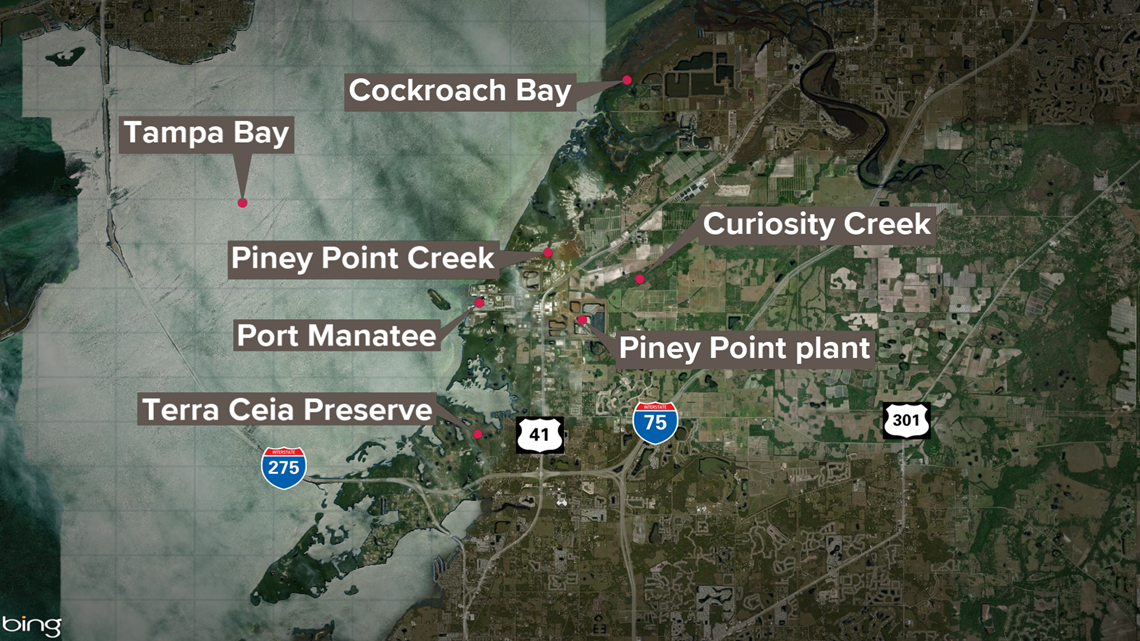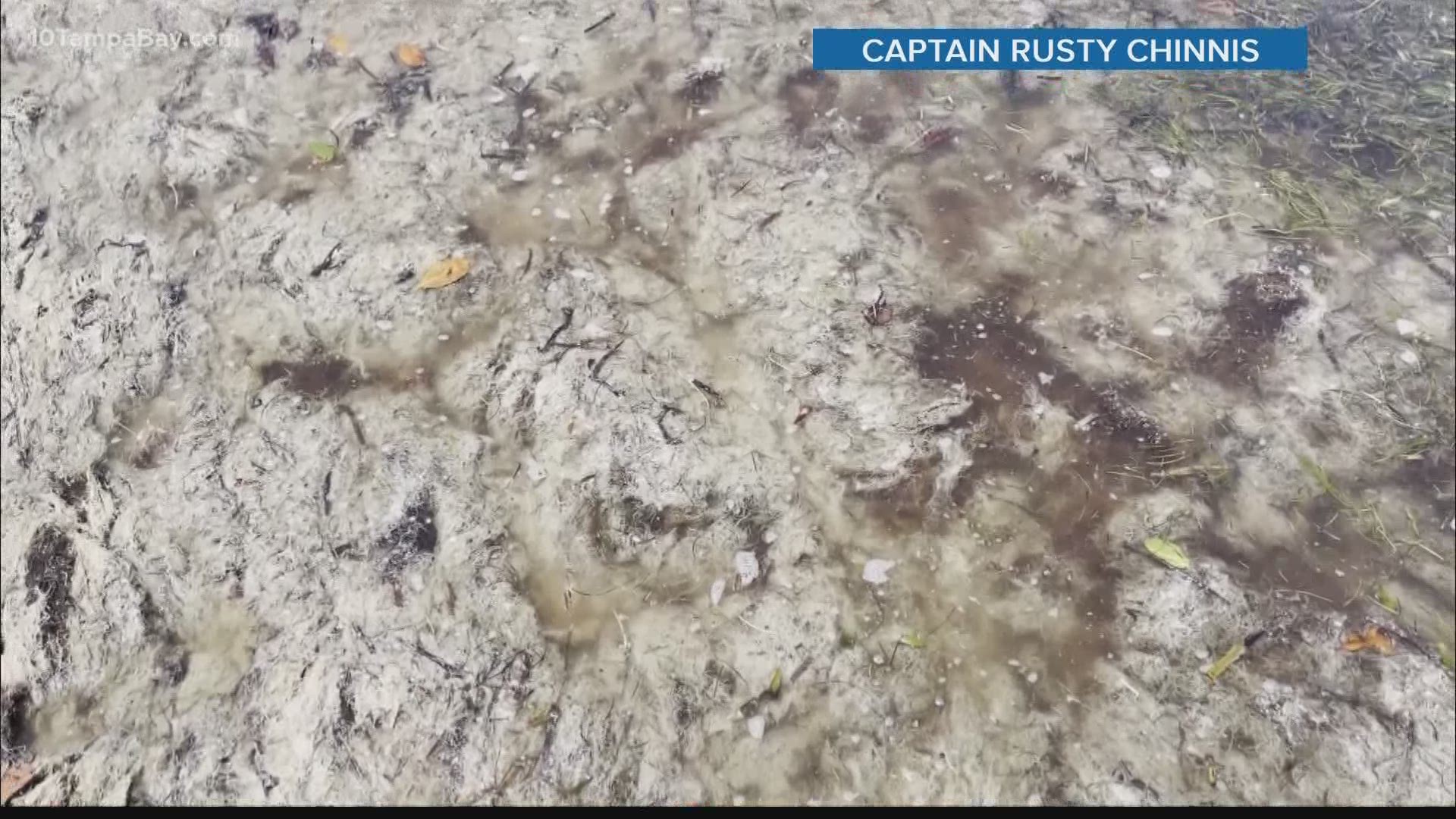ANNA MARIA, Fla — Emptying the wastewater into Port Manatee from the Piney Point reservoir might’ve been the quickest way to avoid potential catastrophe, but environmentalists say it’ll likely create other problems.
Second-generation fishing charter captain Justin Moore is worried, too. In business since 1999, and still recovering from the months-long red tide outbreak in 2018, he said he’d already noticed discoloration in the water after a recent pass-through near where the nutrient-rich wastewater is being pumped into the Bay.
“We’re used to being on these shorelines and we’ve seen up and downs over the years, but we have a pretty good idea what it should look like,” Moore said. “You could tell things were out of place.”
The Florida Department of Environmental Protection reports more than 35 million gallons of wastewater per day are being removed through a combination of techniques, including at least 26 pumps. As of Monday afternoon, around 300 million gallons of wastewater remained in the breached reservoir.
RELATED: Live updates: Clean up, restoration at Piney Point site could cost $200M, Florida Senate projects


Fellow Anna Maria Island fishing guide Todd Romine, who said he’d been in the business for 35 years, called the situation alarming but entirely predictable given past environmental issues at Piney Point and elsewhere.
“And unfortunately something of this magnitude has to happen before it brings about awareness to get something done,” Romine said.
The effects from what’s happening now could take weeks, even months, to be fully realized, Ed Sherwood said. The director of the Tampa Bay Estuary Program said it was disheartening to see what was happening after “significant” progress from 30 years of work to reduce nutrient levels in Tampa Bay.
"What has been discharged to the bay so far is equivalent to like 50 to 60,000 bags of fertilizer being dumped in all at one time,” Sherwood told 10 Tampa Bay.
What amounts to 460 tons of nitrogen released, he said, has doubled nutrients in the water in mere days to amounts they’d normally expected to see over the course of an entire year.
"That's the shock to the system we're expecting these cascading effects to manifest from," Sherwood said.
The most immediate consequence would be algal blooms, which could deplete oxygen levels and lead to fish kills. But that all depends on where the contaminated discharge flows and how quickly it can get there, Sherwood said.
Researchers at the University of South Florida are among those working on forecasts and models.
“That’s part of the response effort now to collect the appropriate data to determine where the material is going, where it’s being taken up, and where it ultimately might be transported to,” said Tom Frazer, dean of the USF College of Marine Science.
Until then, Moore and others worry about how much more their beloved bay can take.
“We have to take these things seriously because this cannot continue – not for my kids' sake and their kids' sake,” Moore said. “We won't have anything left."
What other people are reading right now:
- Live updates: There only is 1 breached area of Piney Point reservoir, state says
- Officials: US Army Corps examining failing wall at Piney Point site
- Manatee County schools halts bus pick-ups inside Piney Point evacuation zone
- Pasco County lifts indoor mask mandate, but schools will still require face coverings
- Strong demand from younger people as vaccine eligibility age drops to 16
- 60 Minutes investigates allegations Gov. DeSantis' vaccine distribution favored the wealthy
►Breaking news and weather alerts: Get the free 10 Tampa Bay app
►Stay In the Know! Sign up now for the Brightside Blend Newsletter

